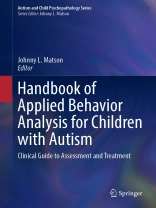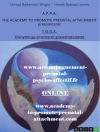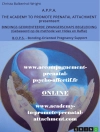The handbook examines the latest advancements in applied behavior analysis (ABA) as the preferred method of treatment for children diagnosed with autism spectrum disorder (ASD). It synthesizes the most current research data and trends with best-practice interventions to form a comprehensive, state-of-the-art resource. The handbook reviews ABA research and practices in depth and identifies the interventions most relevant to children across the autism spectrum.
Key areas of coverage include:
- Foundations of applied behavior analysis.
- ABA treatments for disorders comorbid with autism spectrum disorder.
- Functional assessment for children with autism.
- Operational definitions as well as observing and recording data for children with autism.
- The relationship of measures of psychopathology and applied behavior analysis.
- Transitioning across tasks for children with autism, including toe walking, feeding problems, andself-help issues.
- Anxiety, depression, and ADHD in children with autism.
The Handbook of Applied Behavior Analysis for Children with Autism is an essential reference for researchers, clinicians and graduate students as well as clinicians, therapists, and other practitioners across such interrelated disciplines as clinical child, school, and developmental psychology, child and adolescent psychiatry, social work, rehabilitation medicine/therapy, pediatrics, and special education.
İçerik tablosu
Chapter 1. History and Overview of Applied Behavior Analysis.- Chapter 2. Foundations of Applied Behavior Analysis.- Chapter 3. Applied Behavior Analysis and its Application to Autism and Autism Related Disorders.- Chapter 4. Comprehensive Assessment of Autism Spectrum Disorders .- Chapter 5. Functional Assessment in Applied Behavior Analysis.- Chapter 6. Operational Definitions, Observation and Behavioral Recording in Applied Behavior Analysis .- Chapter 7. Choice and Preference Assessments.- Chapter 8. School-Based Interventions for Students with Autism.- Chapter 9. Communication Assessment and Intervention .- Chapter 10. Some Important Repertoires to Consider when Training Autism Interventionists .- Chapter 11. Social Skills and Applied Behavior Analysis.- Chapter 12. Rituals and Stereotypies.- Chapter 13. Transition-Related Problem Behavior.- Chapter 14. Self-Injury.- Chapter 15. Noncompliance.- Chapter 16. Teaching Adaptive Skills to Children with Autism Spectrum Disorder: From Assessment to Treatment .- Chapter 17. Toe Walking.- Chapter 18. Behavioral Assessment and Treatment of Feeding Problems in Autistic Children.- Chapter 19. ADHD, Distractibility and ABA.- Chapter 20. Generalization and Maintenance.- Chapter 21. Some Important Repertoires to Consider when Training Autism Interventionists .- Chapter 22. Private Practice.
Yazar hakkında
Johnny L. Matson, Ph.D., is Professor and Distinguished Research Master (retired) in the Department of Psychology at Louisiana State University-Baton Rouge. Previously, he was Professor of Psychiatry at the University of Pittsburgh School of Medicine. He has served as major professor for 70 doctoral candidates and is the author of more than 850 publications, including 53 books. Dr. Matson is the founding editor of the Review Journal of Autism and Developmental Disorders.












